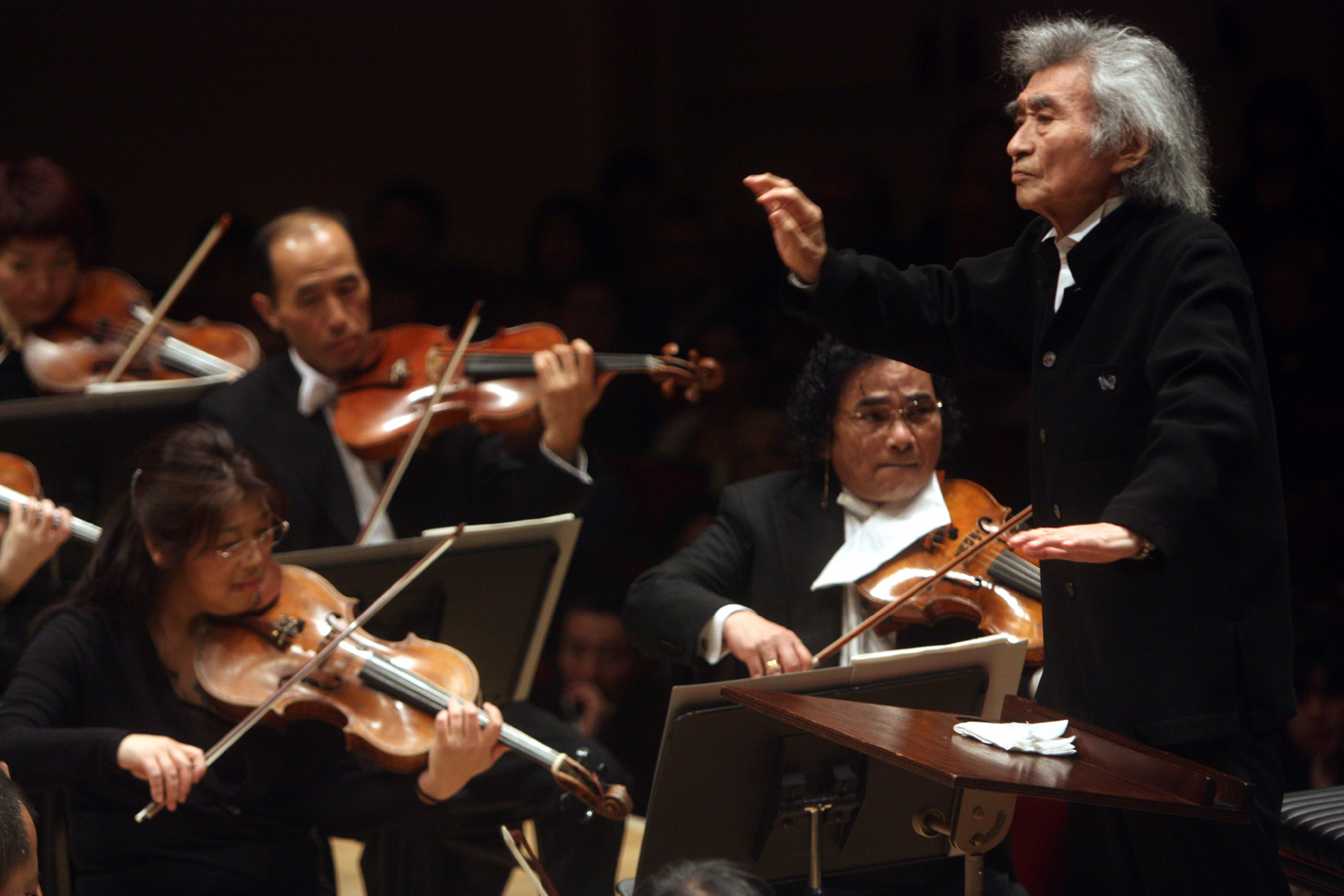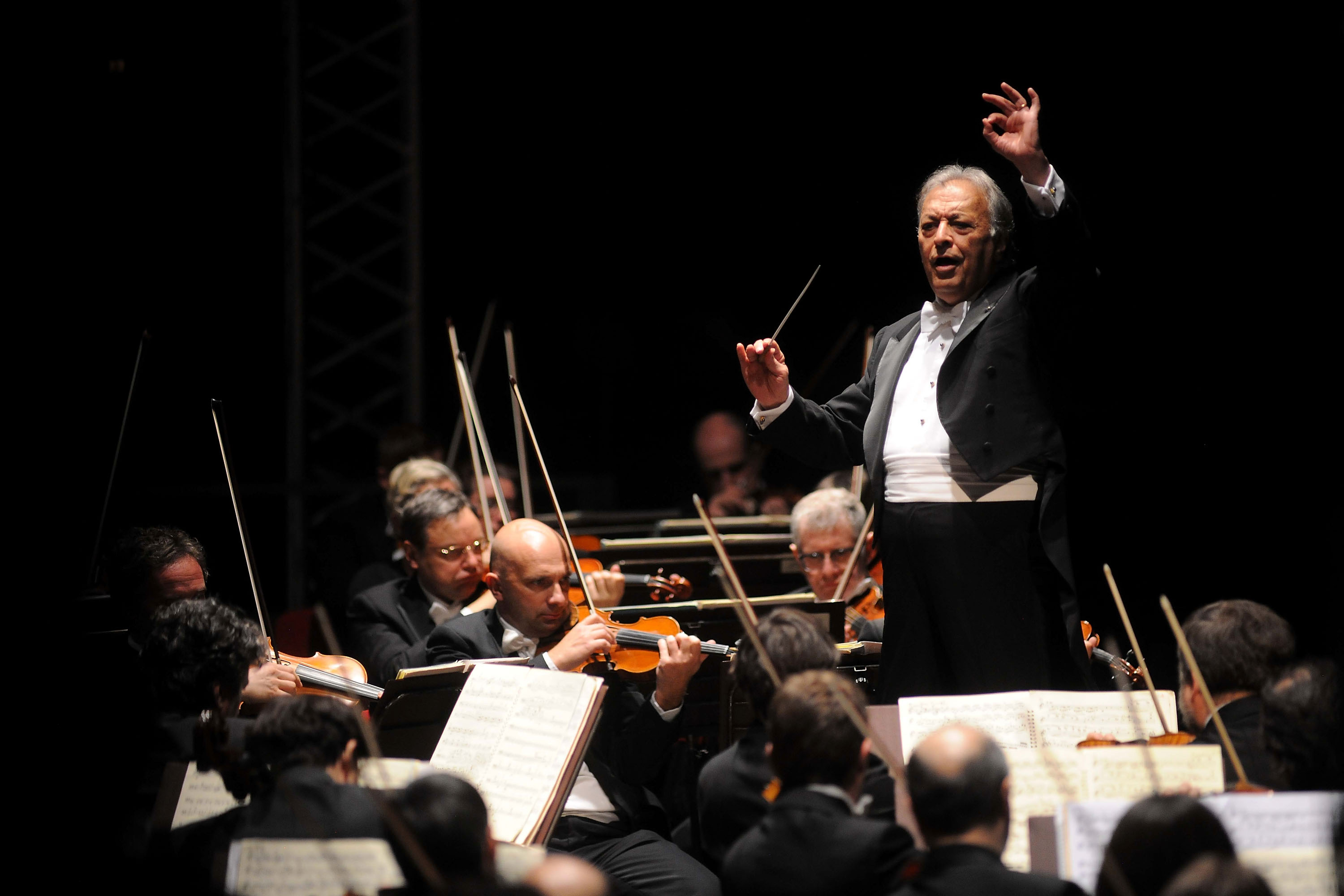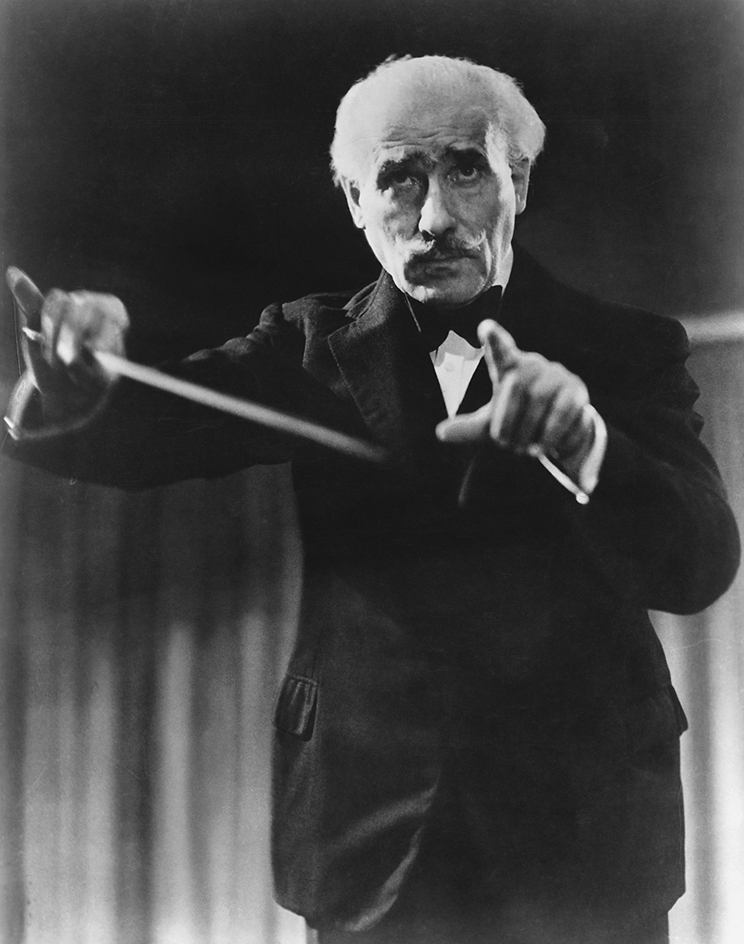Conducting, in music, is the art of directing or controlling the performance of a piece of music. The person who directs such a performance is the conductor. The conductor may direct a band, orchestra, choir, or other group of musicians.

The conductor directs the musicians by keeping time with a baton or with the hands, and by means of gestures and facial expressions. However, conductors do their most important work before a performance, sometimes even before rehearsing a composition. In most instances, the conductor selects the music to be played at a concert. After selecting a work, the conductor must interpret the music by deciding how it should be played. Interpretation of a work includes deciding the tempo (how fast the music should be played); the tonal quality (what kind of sound quality is required); the dynamics (how loud or how soft certain passages should be in relation to other passages); and the phrasing (the way in which a musical theme should be broken up into groups of notes to bring out expression and musical meaning).
Many of the features of the music, especially tempo and dynamics, may have already been indicated by the composer. The conductor directs from the composer’s score. The score is a written or printed piece of music arranged for different instruments or voices. The conductor rehearses the music with the players. During a rehearsal, the conductor asks individual musicians or sections of the orchestra to play various parts of the score again and again until the desired effect has been achieved. The conductor strives for the correct balance among the many instruments playing at the same time and adjusts the sound to suit the acoustics of the performance hall. The finest conductors are respected not only for their musical skill but also for their ability to inspire both musicians and audiences.

Most conductors also help audition musicians who apply for positions in an orchestra or to join a choir. A conductor listens to the applicants perform and then recommends who should be invited to join.
Conducting became important in music in the 1600’s, following the rise of the first modern orchestras. At this time, groups of musicians became so large that they could only perform accurately together if someone indicated the musical beat for them. The first conductors beat time by tapping the floor with the tip of a long cane. The Italian-born composer Jean-Baptiste Lully, who was director of the music at the court of King Louis XIV of France, died in 1687 after stabbing his toe during a rehearsal with such a cane, causing a wound that became infected.
During the 1700’s, most musical performances were controlled or directed from the organ or harpsichord. But in the 1800’s, symphony orchestras became much larger. Conductors began directing large-scale musical performances from a rostrum or podium in front of the musicians, using a baton. This is the usual method of conducting today. Occasionally a conductor may also be a soloist during a performance. For example, a pianist may conduct a composition while playing the piano.
Many famous conductors, such as Felix Mendelssohn of Germany and Hector Berlioz of France, were also great composers. But by the 1900’s, several musicians had emerged who were noted mainly as conductors. They were musical superstars, and some ruled orchestras like tyrants. Notable conductors of the 1900’s included Daniel Barenboim, Sir Thomas Beecham, Leonard Bernstein, Sarah Caldwell, Herbert von Karajan, Otto Klemperer, Serge Koussevitsky, Zubin Mehta, Dimitri Mitropoulos, Pierre Monteux, Eugene Ormandy, Seiji Ozawa, André Previn, Fritz Reiner, Sir Georg Solti, Leopold Stokowski, George Szell, Arturo Toscanini, and Bruno Walter.

See also Opera (The conductor).
